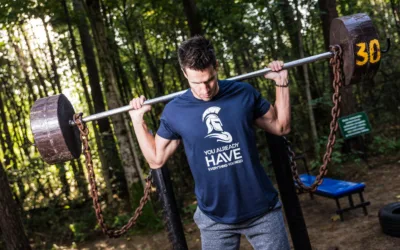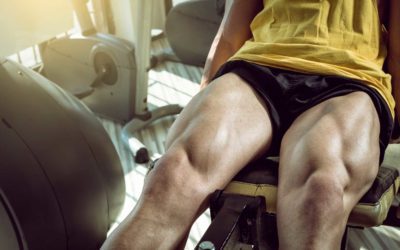The Best Exercises for Skiing Start with Strength Training
Helping others increase their performance for winter sports is the lion’s share of my job. My email inbox is often bombarded with messages asking what the best exercises for skiing/snowboarding are.
Implementing effective means of strength training is essential to winter sports success. Whether I am assisting an Olympic athlete or a weekend warrior, strength training is vital. Here are just a few exercises for skiers and snowboarders need to start.
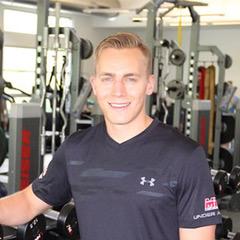
Written By
Jimmy Pritchard
Jimmy Pritchard is currently the Director of Strength & Conditioning for Ski & Snowboard Club Vail in Vail, Colorado. He holds a BSc in Exercise Science from Colorado Mesa University and is currently working on his MSc degree in Exercise Science from Edith Cowan University. He is certified through the NSCA with both his CSCS and RSCC certifications.
Programs
Website
Demands of the Mountain
When writing a program for an athlete or client, I first begin by analyzing the demands of their sport. The needs of a competitive 16-year-old female alpine skier will vary greatly to that of a 40-year-old male who snowboards recreationally on the weekends. That being said, both individuals will require absorption and transfer of large eccentric and isometric forces whilst on the hill. This means that skiing exercises involving mobility, stability, strength, and transfer of force are top priorities.
Although programming will vary greatly between individuals, the first and perhaps most important area to address is mobility. A great deal of dorsiflexion is needed throughout each turn and movement for skiers/snowboarders, thus the ankles should consistently be tended to.
The Banded Ankle Dorsiflexion exercise, as demonstrated here, trains the ankle movement required to flex and apply major force through the ski or snowboard boot.
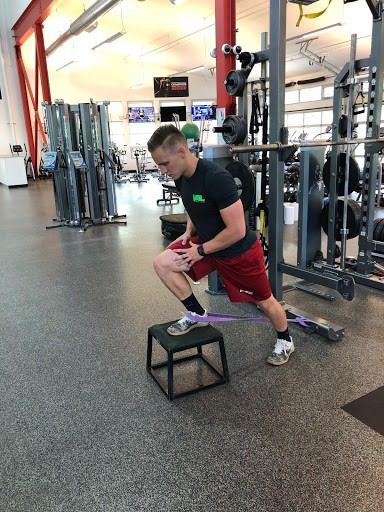

Thoracic Rotation Exercises
Additionally, the knees, hips, shoulders, and thoracic spine must all have adequate mobility to ensure proper body alignment for each turn or jump taken. A Thoracic Rotation exercise can combat the repetitive internal rotation found in alpine skiing.
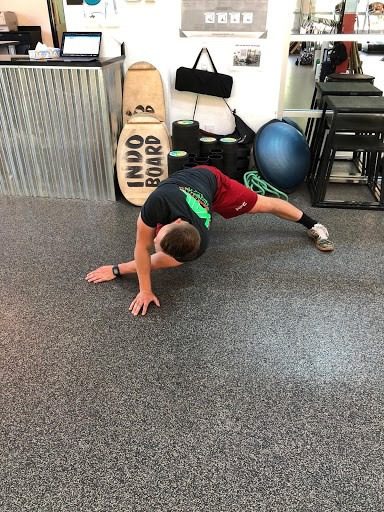

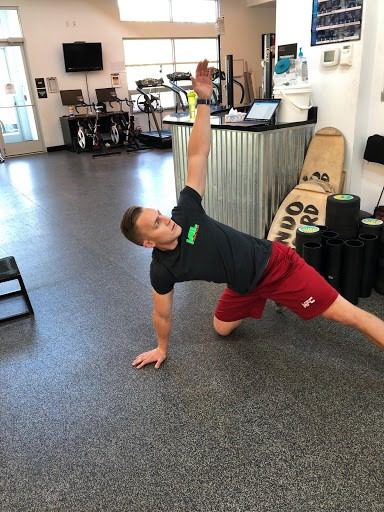

Core Stability
Next, stability throughout the “core” is absolutely essential. I put “core” in quotations because there is a lot of confusion on what comprises the “core” let alone how to properly train this area. The core provides stabilization and transfer of force. In my opinion it encompasses nearly everything from the shoulders to the glutes. Directly related to skiing, a strong core or high level of core stability aids in the upper-lower body separation needed to execute precision turns. Adding movements such as presses, bear crawls, Turkish get-ups, and loaded carries will assist in improving core strength and stability.
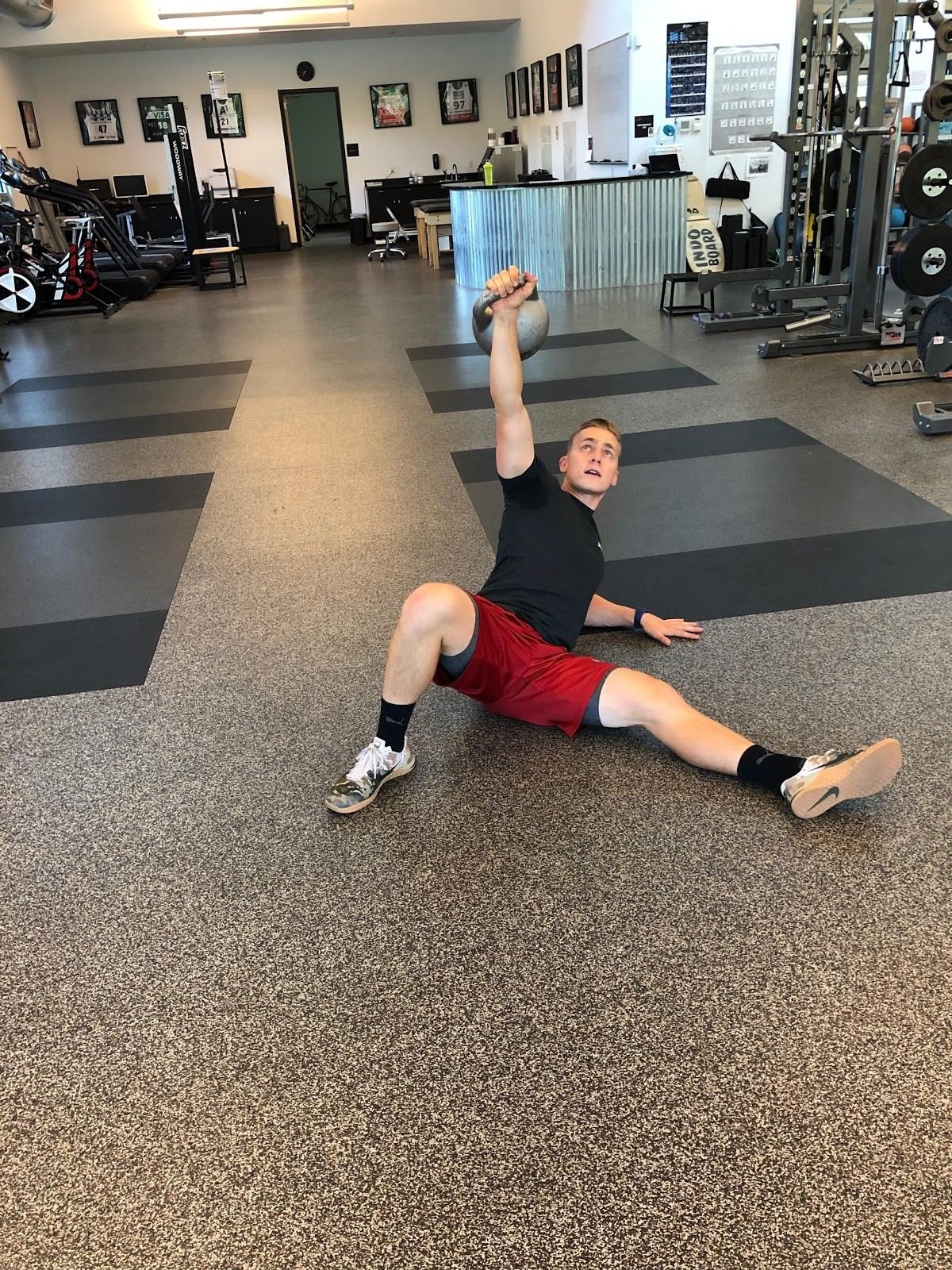

Above is an example of a Turkish Get-Up, a full-body exercise challenging stabilization and mobility of the shoulder, hips, and core.
Performance Begins With Strength
Moving on from mobility and stability, strength is of absolute importance when it comes to performance on the hill. Specifically, unilateral strength and antagonist strength of the muscles most utilized while skiing or snowboarding. Bending the ski to make a sharp turn requires loading a large force one side of the body at a time.
Training modalities should be aimed at strengthening the body in a similar fashion and destroy any asymmetries that may exist. The single leg RDL is a fantastic exercise to challenge and build unilateral leg strength and stability.
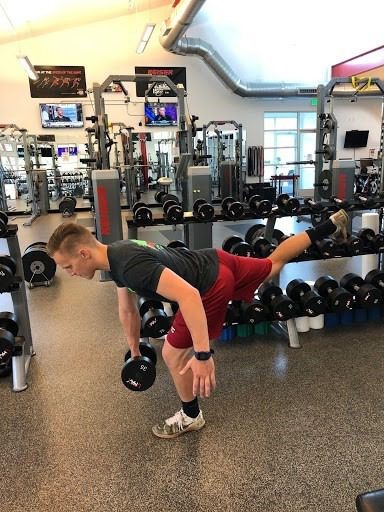

Strengthening the posterior chain is another priority, as most ski and snowboard movements heavily load the anterior portion of the body. Strengthening the glutes, hamstrings, and lower back will aid in injury reduction. Glute ham raises, reverse hyperextensions, Nordic hamstring curls, deadlifts, and barbell hip thrusts are all examples of exercises to add to your program for increased posterior chain strength.
The Glute Ham Raise, displayed below, is a fantastic way to strengthen the posterior chain and bulletproof the glutes/hamstrings.
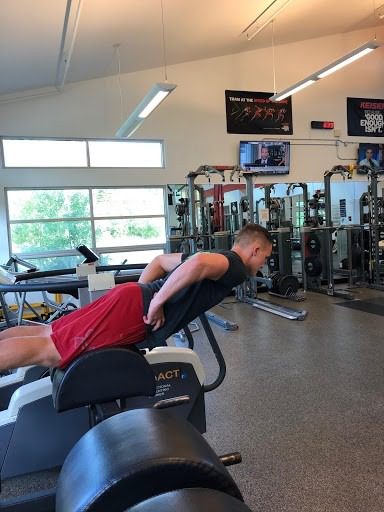

Multiple Planes of Motion
Lastly, training for winter sports should include movements throughout various planes of motion. A common error I see is programs that only work through the sagittal plane, meaning the program includes very little side-to-side or twisting movements.
Winter sport athletes don’t just move perfectly forward and back or up and down. Effective programming must include movement through the frontal, sagittal, and transverse plane. The Singe-Leg Med Ball Rotational Toss challenges single-leg stability while developing power through multiple planes of motion.
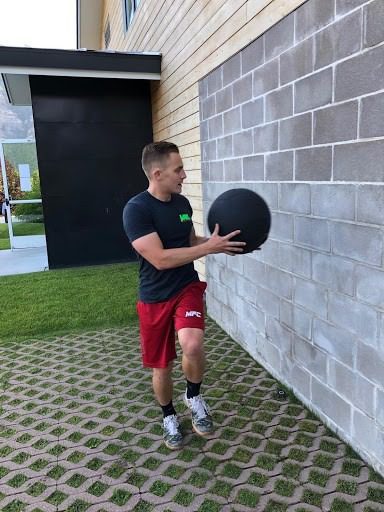

Winter sports such as skiing and snowboarding are extremely unique. Thus, they require a blend of both unique and conventional strength training modalities. Give some of these exercises an honest shot and watch your performance on the hill increase substantially!
Find Your Perfect Training Plan
Sometimes all you need to reach your destination on your fitness journey is an expert guide. Look no further, we've got you covered. Browse from thousands of programs for any goal and every type of athlete.
Try any programming subscription FREE for 7 days!
Related Articles
You May Also Like...
Slow Reps vs. Fast Reps
You’ve probably noticed that some people in the gym tend to perform their reps as fast as possible, whereas others take a slow and controlled approach. But which is better? Dr. Andy Galpin is a Professor of Kinesiology at the Center for Sport Performance at California...
How to Do Leg Extensions Without a Machine
Short shorts are the new stinger tanks. Rocking those big tree trunks with canyon deep cuts is so hot. Leg extensions are a bodybuilding staple—they isolate your quads, the front-facing muscle group of your thighs, by flexing (bending) and extending (straightening)...
Tried-and-True Methods to Fix Plantar Fasciitis
What is Plantar Fasciitis? If you’re new to running or returning to it after a break, you might have been blighted by plantar fasciitis, a fancy name for an annoyingly common foot problem. It’s when the band of tissue that connects your heel to your toes (the plantar...
Slow Reps vs. Fast Reps
You’ve probably noticed that some people in the gym tend to perform their reps as fast as possible, whereas others take a slow and controlled approach. But which is better? Dr. Andy Galpin is a Professor of Kinesiology at the Center for Sport Performance at California...
How to Do Leg Extensions Without a Machine
Short shorts are the new stinger tanks. Rocking those big tree trunks with canyon deep cuts is so hot. Leg extensions are a bodybuilding staple—they isolate your quads, the front-facing muscle group of your thighs, by flexing (bending) and extending (straightening)...


Want more training content?
Subscribe
For Coaches
For Athletes
About
Support
Training Lab
Access the latest articles, reviews, and case studies from the top strength and conditioning minds in the TH Training Lab!
Made with love, sweat, protein isolate and hard work in Denver, CO
© 2024 TrainHeroic, Inc. All rights reserved.
